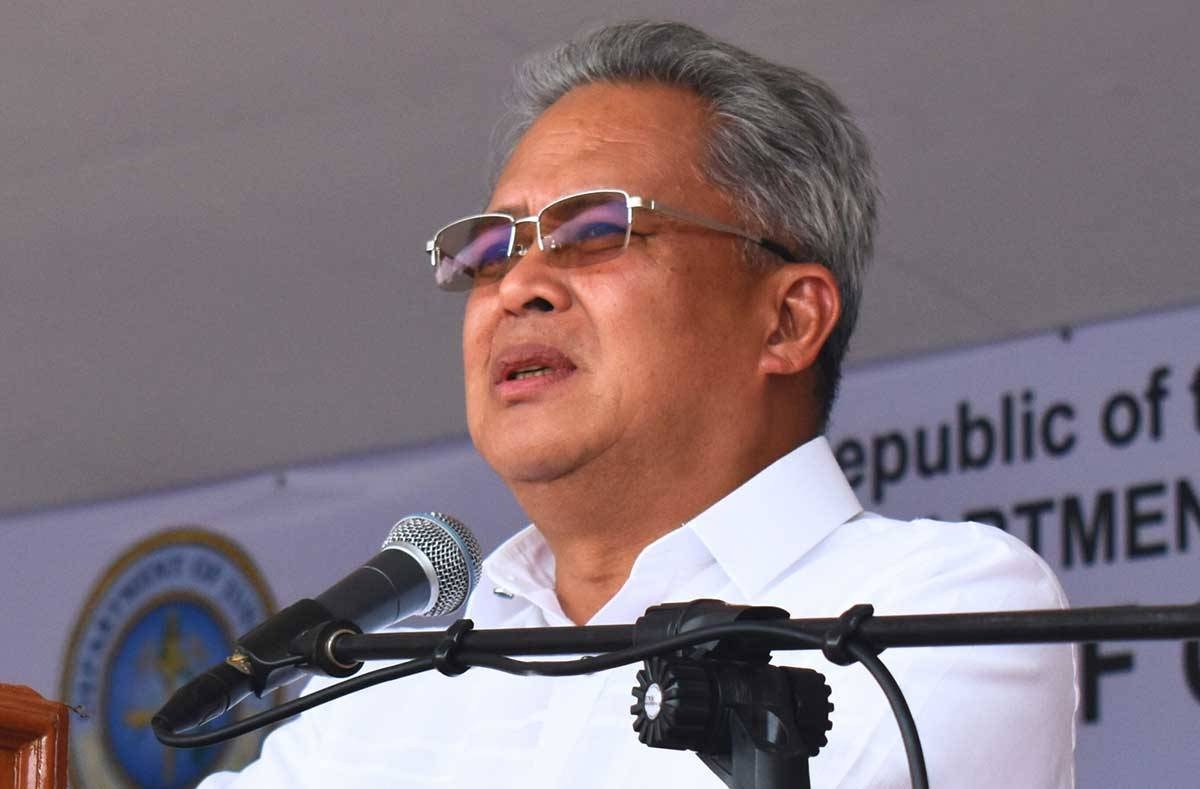Merger of BuCor, BJMP eyed
THE government is exploring the possibility of merging the Bureau of Jail Management and Penology (BJMP) with the Bureau of Corrections (BuCor). In an interview on the sidelines of the 2nd Association of Southeast Asian Nations (Asean) Regional Correctional Conference in Puerto Princesa City, BuCor Director General Gregorio Catapang said the merger, which has been endorsed by Justice Secretary Jesus Crispin Remulla, aims to create a unified penology and correctional system, with BuCor serving as the lead agency. The proposal is seen as a response to the worsening congestion in the country's detention facilities, particularly in Metro Manila. The BJMP, which oversees jails housing pre-trial detainees and those serving sentences of three years or less, manages around 120,000 persons deprived of liberty (PDLs). BuCor, which supervises convicted individuals serving longer sentences, has a PDL population of 55,000. Under the plan, BJMP facilities, especially those in highly congested urban areas, may be relocated to Regions 3 (Central Luzon) and 4A (Calabarzon), Catapang said. "The move aims to alleviate overcrowding and improve the rehabilitation process for PDLs," he said. Justice officials believe consolidating BJMP and BuCor into a single governing body will result in better case monitoring, streamlined operations, and improved reformation programs. While an executive order could facilitate the transfer of BJMP under the Department of Justice (DOJ), a law would still be required to fully integrate the two agencies, particularly in terms of budget allocation. The proposed restructuring would also address inefficiencies in the judicial process, particularly cases where detainees have been held in BJMP facilities longer than their actual sentences due to slow judicial proceedings and lack of access to bail. A report from the Commission on Human Rights highlights that at least 50 percent of BJMP detainees have been jailed beyond their prescribed prison terms due to delayed case resolutions. The merger aims to centralize case tracking and expedite legal proceedings, ensuring that PDLs are not unjustly detained beyond their sentences. Another key goal of the merger is regionalization, which would allow PDLs to serve their sentences in facilities closer to their families. The overcrowding rate in BJMP facilities in Metro Manila exceeds 400 percent of the intended capacity, posing significant risks to health, security, and rehabilitation efforts. Justice officials believe that by transferring BJMP's oversight to BuCor, better management strategies can be implemented, including the establishment of new correctional facilities outside Metro Manila. To fund the relocation and expansion of facilities, the DOJ is considering public-private partnerships (PPP). Catapang said BuCor has already engaged in leasing government-owned lands for agricultural and commercial use, generating revenue to support prison reforms. Similar models may be explored to develop modern correctional facilities with better living conditions and rehabilitation programs. The merger aligns with President Ferdinand Marcos Jr.'s broader penal reform agenda, which seeks to decongest prisons and implement a more rehabilitative approach to incarceration. While challenges remain, including securing legislative approval and addressing potential resistance from stakeholders, the initiative is being touted as a long-term solution to the worsening jail congestion and inefficient correctional system. If the plan moves forward, the full integration of BJMP into BuCor could take place within the next few years. The DOJ is expected to issue a formal proposal in the coming months, which will be presented to Congress for deliberation.

THE government is exploring the possibility of merging the Bureau of Jail Management and Penology (BJMP) with the Bureau of Corrections (BuCor).
In an interview on the sidelines of the 2nd Association of Southeast Asian Nations (Asean) Regional Correctional Conference in Puerto Princesa City, BuCor Director General Gregorio Catapang said the merger, which has been endorsed by Justice Secretary Jesus Crispin Remulla, aims to create a unified penology and correctional system, with BuCor serving as the lead agency.
The proposal is seen as a response to the worsening congestion in the country's detention facilities, particularly in Metro Manila.
The BJMP, which oversees jails housing pre-trial detainees and those serving sentences of three years or less, manages around 120,000 persons deprived of liberty (PDLs).
BuCor, which supervises convicted individuals serving longer sentences, has a PDL population of 55,000.
Under the plan, BJMP facilities, especially those in highly congested urban areas, may be relocated to Regions 3 (Central Luzon) and 4A (Calabarzon), Catapang said.
"The move aims to alleviate overcrowding and improve the rehabilitation process for PDLs," he said.
Justice officials believe consolidating BJMP and BuCor into a single governing body will result in better case monitoring, streamlined operations, and improved reformation programs.
While an executive order could facilitate the transfer of BJMP under the Department of Justice (DOJ), a law would still be required to fully integrate the two agencies, particularly in terms of budget allocation.
The proposed restructuring would also address inefficiencies in the judicial process, particularly cases where detainees have been held in BJMP facilities longer than their actual sentences due to slow judicial proceedings and lack of access to bail.
A report from the Commission on Human Rights highlights that at least 50 percent of BJMP detainees have been jailed beyond their prescribed prison terms due to delayed case resolutions.
The merger aims to centralize case tracking and expedite legal proceedings, ensuring that PDLs are not unjustly detained beyond their sentences.
Another key goal of the merger is regionalization, which would allow PDLs to serve their sentences in facilities closer to their families.
The overcrowding rate in BJMP facilities in Metro Manila exceeds 400 percent of the intended capacity, posing significant risks to health, security, and rehabilitation efforts.
Justice officials believe that by transferring BJMP's oversight to BuCor, better management strategies can be implemented, including the establishment of new correctional facilities outside Metro Manila.
To fund the relocation and expansion of facilities, the DOJ is considering public-private partnerships (PPP).
Catapang said BuCor has already engaged in leasing government-owned lands for agricultural and commercial use, generating revenue to support prison reforms. Similar models may be explored to develop modern correctional facilities with better living conditions and rehabilitation programs.
The merger aligns with President Ferdinand Marcos Jr.'s broader penal reform agenda, which seeks to decongest prisons and implement a more rehabilitative approach to incarceration. While challenges remain, including securing legislative approval and addressing potential resistance from stakeholders, the initiative is being touted as a long-term solution to the worsening jail congestion and inefficient correctional system.
If the plan moves forward, the full integration of BJMP into BuCor could take place within the next few years.
The DOJ is expected to issue a formal proposal in the coming months, which will be presented to Congress for deliberation.











